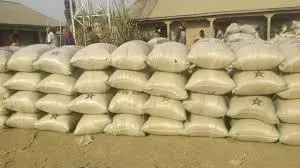Steps To Start A Soya Bean Business In Nigeria And Tips To Succeed
Business Overview of Soya Bean Business In Nigeria
Nigeria is among the major producers of soya beans in the continent of Africa but there is still need for production. There is much demand for this crop within and outside Africa and its demand is around 11 million tonnes. The annual expenditure of the crop in Africa is up to 619 thousand tonnes.
Nigeria as a country needs more soya beans and this article talks about how to start this business in Nigeria.
👉 Relocate to Canada Today!
Live, Study and Work in Canada. No Payment is Required! Hurry Now click here to Apply >> Immigrate to CanadaIntroducing Soya Beans
Soya beans is a nutritious leguminous crop rich in calcium, protein, iron, magnesium, minerals and vitamin. Soya beans is very versatile and you can cook, dry and ferment and convert the products to flour, milk and tofu.

Read Also: Steps to Produce Starch in Nigeria
It is a plant that bears pods and is edible for different purposes. The crop is oleaginous and is common in moderate, subtropical and tropical climates. Its stalks, foliage and pods have a grey or brown coating which has a length of 2 metres. The beans start mellowing after the foliage falls and this is one of the profitable business you can do in Nigeria.
Cultivation of soya beans
The cultivation of soya beans in Nigeria begins in June or May in the country. Soya beans does well on different categories of soil apart from deep soils that has low water retention. 6.5 is the optimal PH for the cultivation of soya beans and the crop does better in climates that are moderate.
It blossoms as the night elongates and the days get shorter. Rainfall is another factor in cultivating soya beans in Nigeria since the crop needs rainfall. You can also use irrigation for areas with little rainfall since water helps beans and cods to expand.
Steps To Start Soya Bean Farming In Nigeria:
1. Choose appropriate land with soil
The South Eastern and South Western parts of Nigeria have soils that are good for soya bean farming. Its ground should not be too wet and it should have very few weeds, lesser erosion and proper balance of PH and soil. This will make the plants form better yields and loamy soil is the best type for soya beans.
However if the soil is clay you can enhance it by mixing with mulch, peat moss or sand. Avoid planting soya beans on a waterlogged environment or sandy soil.
Read Also: 7 Steps to Produce Wine in Nigeria
👉 Relocate to Canada Today!
Live, Study and Work in Canada. No Payment is Required! Hurry Now click here to Apply >> Immigrate to Canada2. Choose the right seed variety
Many varieties of soya beans exist and you have to choose the appropriate variety. If you want your soya beans to do well, choose green and edible variety. However if you intend to produce soya milk or flour you can use the yellow seed category.
Select a black seeded variety and the most common are TGX 1485-ID, TGX 1835-10E and TGX 1448-2E. You can get this from the Ministry of Agriculture or from the seed companies. That is where you can get the one that is pest resistant, viable and healthy.
Treat the seeds using captan in order to preserve them from soil borne diseases.
3. Planting
Plant at the appropriate time and a hectare should have between 50kg and 60kg of seeds. Plant it in May and consider the temperature of the soil which should be 15.5°C (60F) and the air is 21C (70F). Avoid planting soya beans close to a crop like onions.
4. Seed bed preparation
There is need for proper balance of soil nutrients in order for the soil to grow in a proper manner. However if the nutrients are not in proper quantities the plants growth as affected. Use fertilizer, compost or manure to enrich the soil before you plant.
Cultivation starts in May/June as the rain starts and harvesting period is between October/November.
Read Also: 9 Steps to Produce Matches in Nigeria
5. Seed inoculation
Soya beans requires much nitrogen and one way to inoculate the crops is by making use of Bradyrhzobium japonicum.
Using this serves as for nitrogen fixing and you can put them inside a bucket and then sprinkle using the bacterium for inoculation.
Make use of a small shovel or spade for mixing the beams and then coat each. Also keep the seeds out of sunlight that is direct and also plant them in 24 hours of their inoculation.
6. Planting of the seeds
Sow the seeds of the soya beans 3.8cm (1.5 inches) deep inside the soil and then space the soya beans to about 7.6cm (3 inches) apart from each other. Plant the beans 76cm (30 inches) apart from each other.
The feeds should face the ground when planting and you can sow manually by putting 3 or more of the seeds inside the soil.
Cover them with surface soil after planting manually or use planter or seed drill for a uniform and efficient planting. Water in moderate quantities till the plant begins to germinate and avoid watering the foliage to prevent moulds from growing. Too much watering can lead to cracking.
7. Care
a. Keep the crops from pests like rabbits by making a fence and pushing few stakes inside the ground after which you attach chicken wire. Buy garden or premade panels.
b. Plant metal rings and then cover with fleece.
c. Remove planters that are weaker and let the stronger ones germinate. Do not tamper with the roots and the cutting of week seedlings should be at ground level. Space the remaining plants at 10-15 (4-6 inches) apart from each other.
8. Weed
Weed regularly and remove the weeds using a spade, hoe or hand. Chemicals like herbicides can serve this purpose since they also eliminate weeds.
Read Also: 9 Steps to Produce Salt in Nigeria
9. Water for soya beans
Soya beans requires extra water during 3 stages which are:
a. during pod development
b. when they first grow and before coming out of the soil. Ensure that the plants are watered well to moisten the soil.
10. Harvesting of soya beans
You can start harvesting from 3 months after your plants mature. Harvesting should be when 90% of that pods turn brown.
Confirm the level and kind of crop. Confirm the level and kind of crop. You harvest at a dry, shell or snap phase. Leave the pods until they turn dry before you harvest.
Another way is to harvest when the beans is dry and the pods start opening. The pods should be between 3 and 2 inches. Cutlass or sickle can serve, pour the plants on tarpaulin and let it dry under sunlight before you thresh.
11. Post harvesting of soya beans
Prepare to thresh the pods once it becomes dry and you can do this manually or with a thresher. Winnowing is next after you complete threshing and you can do this with a winnower or using wind efficacy.
Winnowing separates the soya beans from chaff and you can store in solos and bags. Store in dry, cool and ventilated environment that is free from pests.
12. Diseases and pests
Bugs, pod suckers, bean fliers, silver leaf, nematodes and bug control insecticides with 100 ml in water of 15 litres. Soya bean crop rust, bacteria blight etc are diseases that you can curb with the practice of crop rotation and use of resistant varieties.
Read Also: 10 Best Rice Brands in Nigeria
13. Application of fertilizer
Soya beans do not need much fertilizers since naturally it provides nitrogen using nitrogen fixation through root nodules. You can apply 30kg for each hectare or NPK of 15:15:15.
Conclusion
Soya beans is very rich in protein and is a very nutritious crop. The business is also very profitable and in high demand in Nigeria. This article tells you how to start soya bean farming business in Nigeria.




